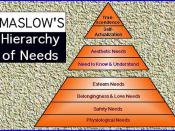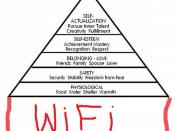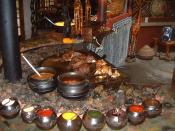Table of Contents
South Africa - Cultural Diversity 2
Understanding Culture 4
2.1 Cultural Dimensions Model 4
2.2 Cross-Cultural Communication Challenges - case: eye contact 5
2.3 Cultural Shock - Respecting Differences and Working Together 6
2.4 Building Trust across Cultural Boundaries 6
WHAT IS CORPORATE CULTURE? 7
3.1 Levels of corporate culture 7
3.2 Adaptive vs. Unadaptive 8
3.3 Competitive Culture 8
HUMAN INTELLIGENCE 9
4.1 Emotional Intelligence 9
4.2 The five (four) domains of emotional intelligence 10
4.3 How can we assess and measure emotional intelligence? 11
4.4 Are emotional and cultural intelligence related? 11
CULTURAL INTELLIGENCE DEFINED 12
5.1 The four factors of cultural intelligence 13
5.2 Why cultural intelligence? 13
5.3 Research results on cultural intelligence 14
MANAGING CROSS-CULTURAL DIFFERNCES 16
6.1 Manager's worldly mindset 16
6.2 Cross-cultural training: What is it? 17
6.3 Hiring, Staffing and incentives 17
6.4 Why raise your cultural intelligence? 18
LEADERSHIP ACOSS CULTURES 20
7.1 Different leadership styles 21
7.2 Key cultural values and their affect on leadership 22
MULTICULTURAL TEAMS 22
8.1 Cultural diversity effects on a team 22
8.2 How can I manage multicultural teams better? 23
8.3 Traditional influence - Transitional influence 23
8.4 Group process and performance i.e. Acculturation 24
8.5 Culturally intelligent team management 26
CONCLUDING REMARKS 28
SOURCES 30
SCHEDULE OF APPENDICES
TABLE - 1 Corporate culture and performance 8
CHART - 1 CQ in the Organisation 14
SOUTH AFRICA - CULTURAL DIVERSITY
Managing and leading people, with various cultural backgrounds, require "cultural intelligence" which in a global setting is a management challenge in the new millennium.
South Africa has a unique cultural background, with a total population of 46.9 million (SSA, 2005) and a surface area of 1.2 million km2. This equates to approximately 39 persons per square kilometre, speaking more than...


